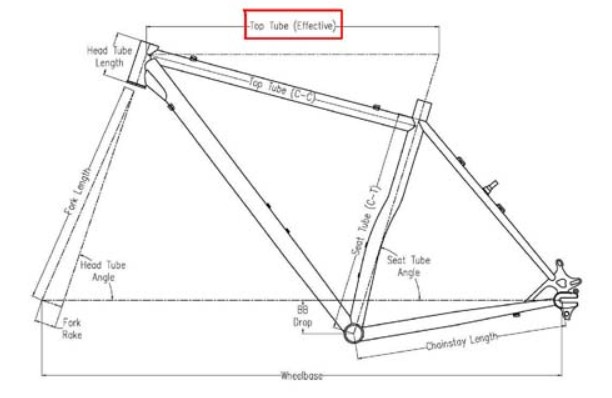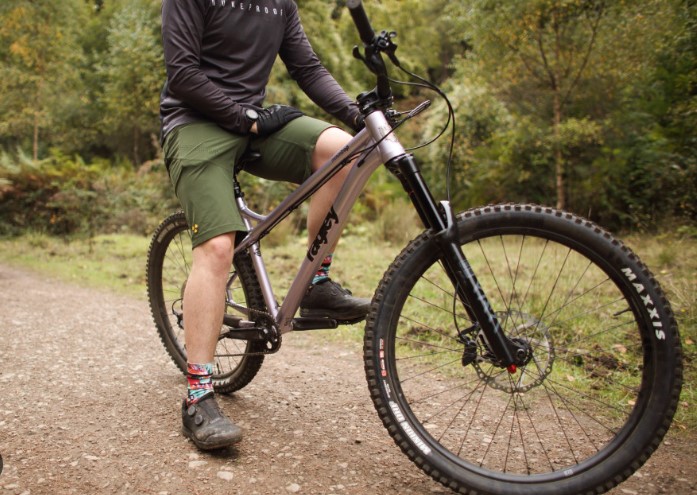Mountain biking, a sport combining adrenaline-fueled excitement with the beauty of nature, has become a favorite pastime for many adventure seekers. But, the key to a fulfilling mountain biking experience lies in choosing the right-sized bike. This blog post delves into the intricacies of mountain bike size charts, making sure you find the perfect fit for a comfortable and enjoyable ride.
Decoding the Mountain Bike Size Chart Enigma

Understanding mountain bike size charts is super important for both beginners and pros riders. These charts are your go-to guide for matching your body dimensions with the right frame size. Frame sizes are typically categorized as XS (Extra Small), S (Small), M (Medium), L (Large), and XL (Extra Large). But, remember, these are just initial guidelines. Your inseam length and height are critical in pinpointing the exact frame size that aligns with your riding style and preferences.
Inseam: The Key to Mountain Bike Frame Size
Your inseam measurement is the distance from the ground to your crotch. This dimension is really key in selecting the right mountain bike size. A well-fitted bike should allow you to stand over the frame with your feet flat on the ground and a comfortable gap between your body and the top tube. A bike that’s too small can make you feel cramped and impede effective control. On the other hand, a bike that’s too large can challenge your balance and pedaling efficiency.
The Inseam-Fit Connection
The inseam measurement influences your comfort and control on the bike. A bike that fits right in terms of inseam height ensures that when you’re standing, there’s enough space to avoid discomfort. This space is not just for comfort; it’s super important for safety, especially when you need to stop suddenly. If your bike is too tall, you might find it challenging to dismount quickly, which can be hazardous in tricky terrain.
How to Measure Your Inseam
Measuring your inseam is straightforward. Stand against a wall with your feet 6-8 inches apart. Place a book or similar object between your legs at crotch level, mimicking a bike seat. Measure the distance from the top of the book to the floor. This measurement is your inseam and is a vital starting point in finding your perfect bike size.
Height: Complementing Inseam for a Perfect Fit
While your inseam is a super important factor in sizing a mountain bike, your overall height also plays a significant role. Typically, taller riders need larger frames, and shorter riders fare better with smaller ones. However, it’s important to remember that height is not the sole determinant. People of similar height can have different inseam lengths, affecting their ideal frame size.
The Height-Frame Size Correlation

Understanding how your height relates to frame sizes helps narrow down your choices. However, it’s important to try out different bike sizes even if they fall within your height range. This hands-on approach ensures you find a bike that not only fits your body measurements but also feels comfortable and responsive to your riding style.
Customizing Your Fit
Even within the right frame size, further adjustments like seat height, handlebar height, and angle can fine-tune the fit. These adjustments are super important for optimizing comfort and performance. A bike that is the correct size but poorly adjusted can still lead to an uncomfortable ride.
Mountain Bike Size Chart: A Practical Guide
To simplify your search for the perfect mountain bike size, here’s a basic chart based on inseam and height measurements:
| Inseam (inches) | Height (feet) | Frame Size |
|---|---|---|
| 25-27 | 4’11”-5’2″ | XS |
| 27-29 | 5’2″-5’4″ | S |
| 29-31 | 5’4″-5’6″ | M |
| 31-33 | 5’6″-5’10” | L |
| 33-35 | 5’10”-6’2″ | XL |
Remember, this chart is a general guide. Individual preferences and riding styles may require adjustments to the frame size. For example, riders who prefer aggressive, technical terrain might choose a smaller frame for better maneuverability. Conversely, those who prioritize speed and stability might lean towards a larger frame.
Additional Considerations: Riding Style and Wheel Size
When selecting a mountain bike, wheel size is another super important factor to consider. Mountain bikes typically come with 26, 27.5, or 29-inch wheels. Larger wheels offer improved stability and roll-over capability, ideal for rough terrains. Smaller wheels, meanwhile, provide enhanced agility and maneuverability, suitable for tight trails and quick turns.
Aligning Wheel Size with Riding Style
Your choice of wheel size should reflect your riding style and the type of terrain you frequent. If you enjoy fast descents and tackling large obstacles, larger wheels might be your best bet. For more technical riding involving sharp turns and intricate maneuvers, smaller wheels can offer the nimbleness you need.
Customizing for Comfort and Efficiency
Apart from frame and wheel size, other bike components like the saddle, handlebars, and suspension can be adjusted or replaced to better suit your body and riding style. These customizations can really improve your riding experience, providing comfort, efficiency, and control.
Fine-Tuning Your Mountain Bike
A well-tuned bike is not just about size. Adjusting the saddle height, changing the handlebar width, and tweaking the suspension settings can all contribute to a more personalized and comfortable ride. These adjustments ensure your bike not only fits your body but also compliments your riding style.
Conclusion
Choosing the right mountain bike size is a blend of art and science. It’s about balancing the technical aspects of sizing charts with personal comfort and riding preferences. Remember, the goal is to find a bike that feels like an extension of your body – one that enhances your riding experience and connects you seamlessly with the trail.
For more insights and tips on mountain biking, including finding the best trails and bike parks, be sure to visit Best Bike Parks. Join our community of biking enthusiasts and embark on your next mountain biking adventure with confidence and the right gear.
Mountain biking is not just about the ride; it’s about the experience, the adventure, and the joy of being one with nature. With the right-sized mountain bike, you’re not just picking a piece of equipment; you’re choosing a partner for your journey. So, gear up, get sized, and hit the trails! Happy trails and enjoy the ride!








